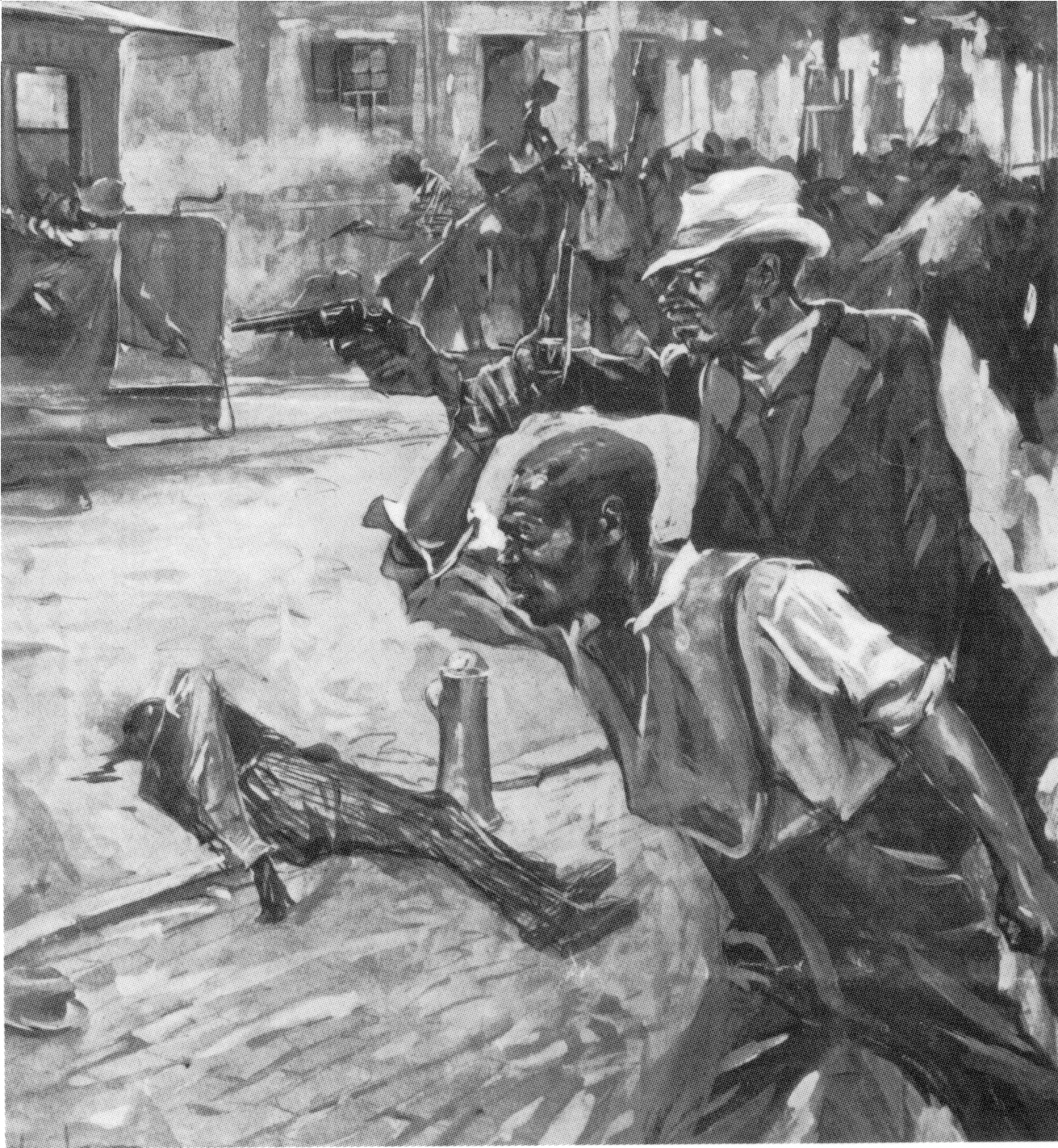MARTIAL LAW IS IMPOSED

The violence was falsely portrayed
in the
national press as a black riot. Picture from
Collier's Weekly, November 26,
1898.
MARTIAL LAW IS IMPOSED

The violence was falsely portrayed
in the
national press as a black riot. Picture from
Collier's Weekly, November 26,
1898.
The violence continued sporadically through much of the morning. There were hundreds of armed whites about the city, both in regular military units and in irregular, militia groups--the latter including Redshirts and "Rough Riders." Order was not restored until midafternoon, when armed regiments from the State Guard, led by Col. Taylor, set up checkpoints throughout the city.African Americans returning home from work were searched for arms, sent on to the next checkpoint, and searched again. Many black leaders, as well as blacks who were found to be armed or who were suspected of being involved in the violence, were arrested and taken to detention areas. Blacks who fled the armed white militias were shot down.
To what extent the military control that was placed over the city corresponded to the plans of the conspirators is impossible to say. It is known the Secret Nine had divided the city into sections and appointed "captains" over each part of the city to take command when the insurrection day came. But it is also clear that there was a chaotic element in the riot, and that the State Guard and other military units were acting to establish control not only over blacks, most of whom were unarmed, but over the hundreds of white irregulars in the city as well.
We know that some blacks, especially domestics, were hidden by white employers, and that hundreds fled the city into the surrounding countryside, many hiding in the swamps.
We also know that the "official" death toll of eleven, reported in the New York Herald and other newspapers, was too low. The county coroner, an African American named David Jacoby, impaneled fourteen coroner's juries, all of which reported the dead man had been "killed by gunshot wounds by persons unknown." Waddell later estimated "about twenty" African Americans had been killed. Recent historians have made higher estimates--as many as fifty or a hundred. Black oral tradition included estimates of as many as three hundred dead, and told stories of wagons, piled with bodies, which were dumped in the Cape Fear.
return to Table of Contents
return to 4.2